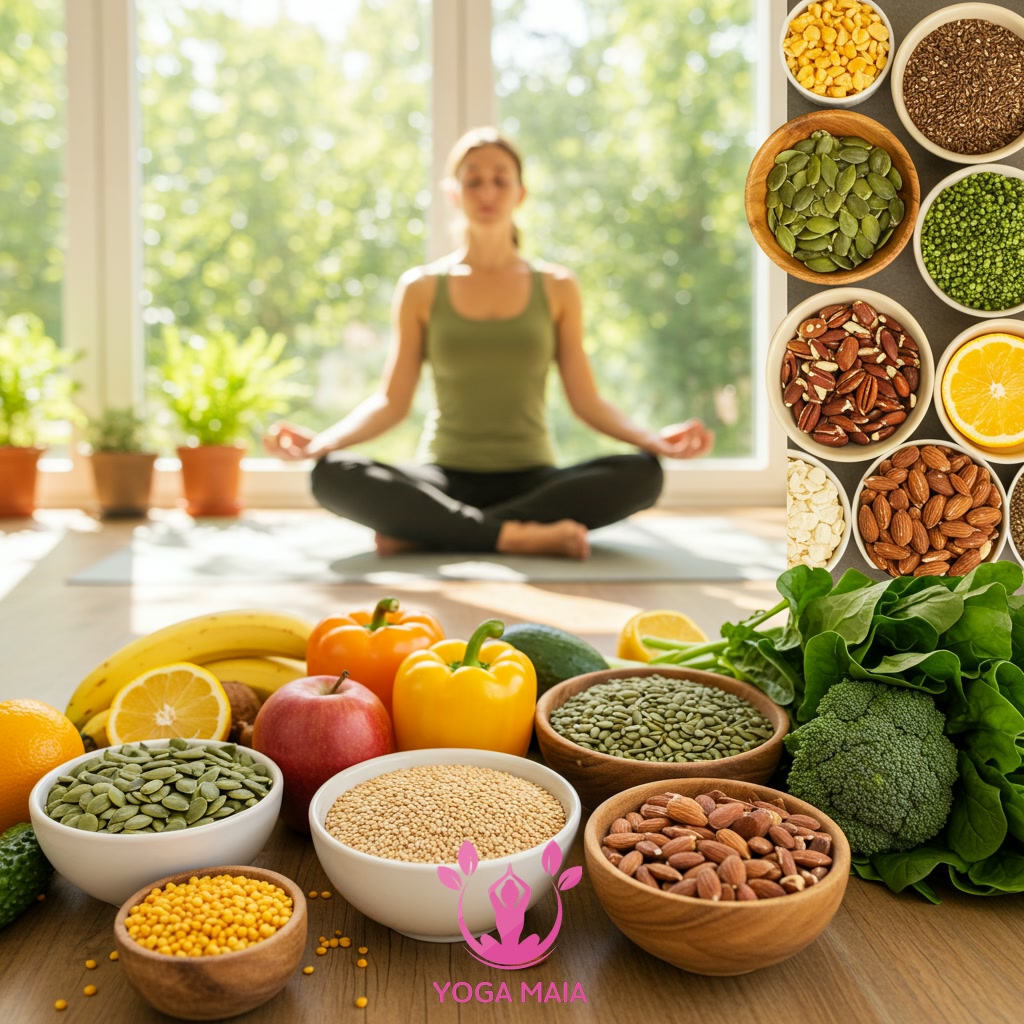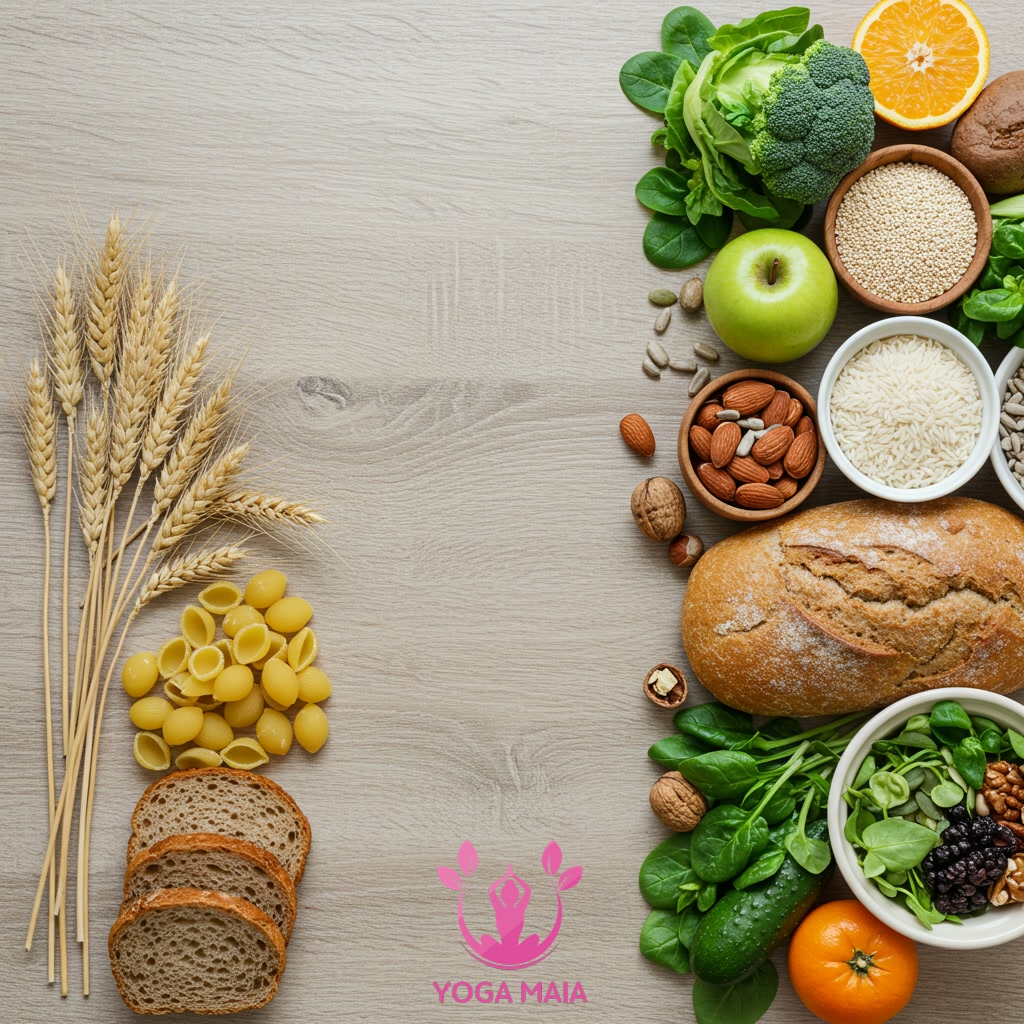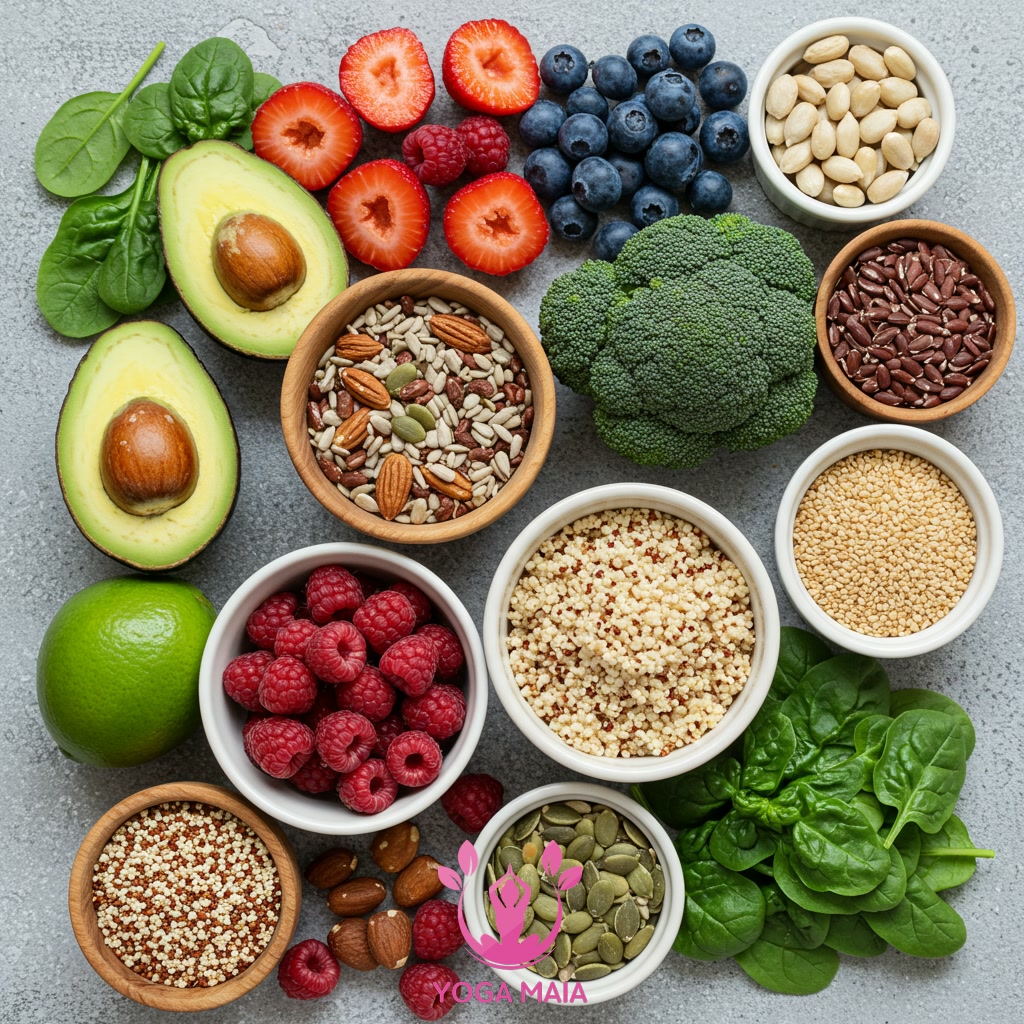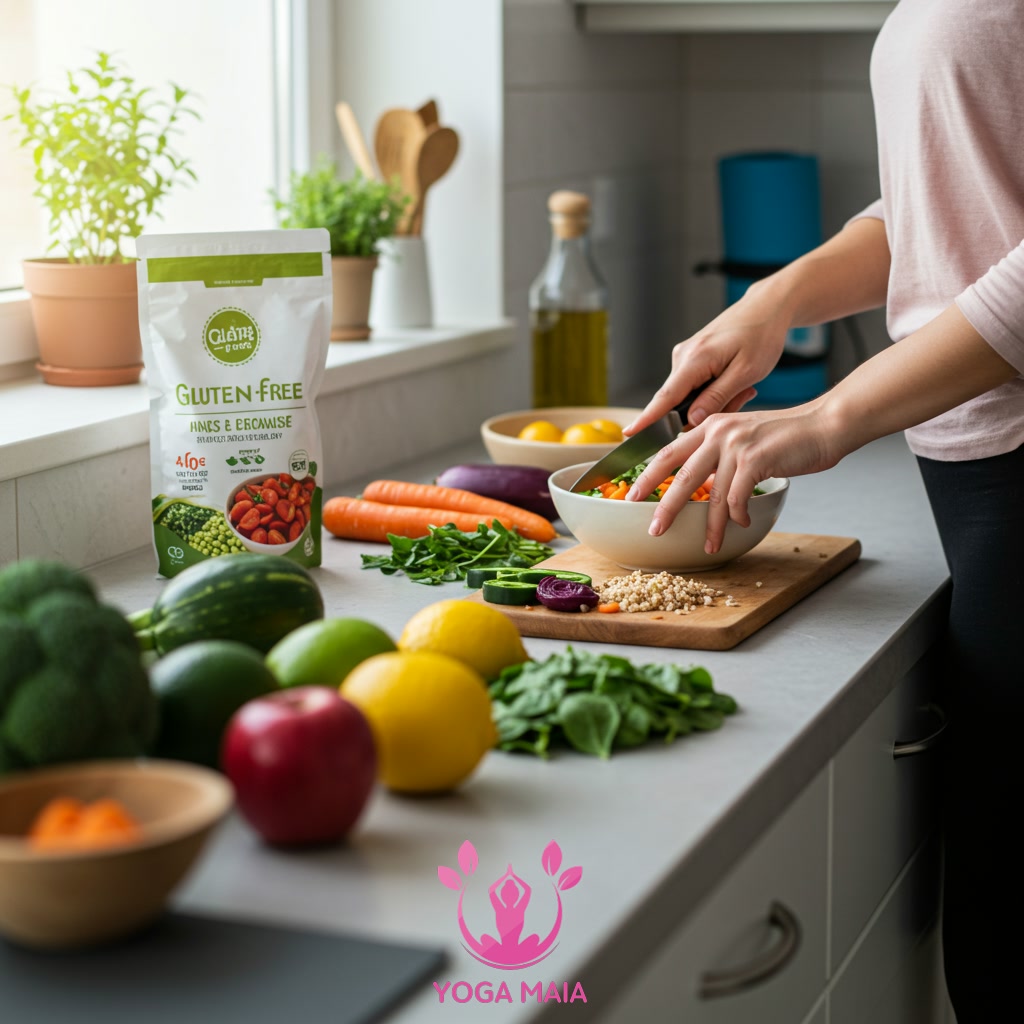Yoga Blog
Fueling Your Practice: A Guide to the Gluten-Free Diet for Yoga Enthusiasts

This guide explores how adopting a gluten-free diet can effectively fuel and enhance your yoga practice. It delves into the potential benefits for yoga enthusiasts, such as improved energy and reduced inflammation, contributing to better performance on the mat. The content provides practical insights and information for individuals seeking to align their dietary choices with their yoga journey for optimal well-being.
Table of Contents
- Section 1: Introduction: The Connection Between Diet and Your Yoga Practice
- Section 2: Understanding the Gluten-Free Diet: What It Is and Why Consider It
- Section 3: Potential Benefits of a Gluten-Free Diet for Yogis
- Section 4: Fueling Your Practice: Gluten-Free Foods for Energy and Well-being
- Section 5: Practical Tips for Embracing a Gluten-Free Yoga Lifestyle
- Section 6: Conclusion: Nourishing Your Body, Enhancing Your Practice
Section 1: Introduction: The Connection Between Diet and Your Yoga Practice
Yoga is a deeply holistic practice, engaging not just the physical body but also the mind and spirit. To fully embrace its benefits, cultivating physical well-being is essential. The food we eat serves as the fundamental fuel for our bodies, directly influencing our energy levels, physical comfort, and overall vitality. Just as a car needs the right fuel to run smoothly, our bodies require nourishing sustenance to support demanding yoga postures, maintain focus during meditation, and sustain endurance throughout a practice. Understanding this intrinsic link between nutrition and physical performance is the first step towards optimizing your experience on the mat. By making conscious dietary choices, you can significantly enhance your ability to move freely, feel lighter, and connect more deeply with your practice.
 Introduction: The Connection Between Diet and Your Yoga Practice
Introduction: The Connection Between Diet and Your Yoga Practice
Section 2: Understanding the Gluten-Free Diet: What It Is and Why Consider It
Building upon the concept of food as fuel for our practice, let’s delve into the specifics of a gluten-free diet. Gluten is a protein found primarily in wheat, barley, and rye. A gluten-free diet involves strictly avoiding foods containing these grains and their derivatives. While essential for individuals with celiac disease or non-celiac gluten sensitivity, many others consider this diet for potential wellness benefits. For yoga enthusiasts, opting for gluten-free foods might contribute to reduced bloating, improved digestion, more stable energy levels, and a decrease in inflammatory responses, all of which can positively impact comfort, focus, and performance on the mat. Understanding what gluten is and where it hides is the first step in exploring if this dietary approach aligns with your personal well-being goals and supports your yoga journey.
 Understanding the Gluten-Free Diet: What It Is and Why Consider It
Understanding the Gluten-Free Diet: What It Is and Why Consider It
Section 3: Potential Benefits of a Gluten-Free Diet for Yogis
Adopting a gluten-free diet can offer distinct advantages for individuals dedicated to their yoga practice. Many yogis report experiencing reduced inflammation, which can lead to decreased joint pain and improved flexibility, allowing for deeper stretches and more comfortable poses. Additionally, eliminating gluten, especially from processed sources, often results in better digestion and less bloating, making inversions and twists feel much more accessible and enjoyable on the mat. Improved nutrient absorption from nutrient-dense gluten-free foods can also contribute to sustained energy levels, supporting longer or more dynamic practice sessions and faster recovery. This physical ease and increased vitality can profoundly enhance concentration and presence during practice, aligning the body’s well-being with the mental and spiritual aspects of yoga.
 Potential Benefits of a Gluten-Free Diet for Yogis
Potential Benefits of a Gluten-Free Diet for Yogis
Section 4: Fueling Your Practice: Gluten-Free Foods for Energy and Well-being
Beyond reducing inflammation, strategically selecting nutrient-dense gluten-free foods is paramount for sustaining energy throughout your yoga practice and supporting overall well-being. Prioritize whole, unprocessed options such as vibrant fruits, leafy vegetables, lean protein sources like legumes and fish, and healthy fats found in nuts, seeds, and avocados. These foods provide complex carbohydrates and essential nutrients that offer stable energy release, avoiding the digestive distress sometimes linked to gluten. Including certified gluten-free grains like quinoa, brown rice, and oats further enhances endurance, while the abundance of vitamins and antioxidants in plant-based foods aids muscle recovery and mental clarity, directly benefiting your performance and focus on the mat.
 Fueling Your Practice: Gluten-Free Foods for Energy and Well-being
Fueling Your Practice: Gluten-Free Foods for Energy and Well-being
Section 5: Practical Tips for Embracing a Gluten-Free Yoga Lifestyle
Embracing a gluten-free diet alongside your yoga practice requires practical steps for sustainable success. Start by becoming a diligent label reader, as gluten can hide in unexpected places. Plan your meals and snacks in advance to avoid last-minute compromises, focusing on naturally gluten-free options like fruits, vegetables, lean proteins, and gluten-free grains such as quinoa and rice. Experiment with gluten-free alternatives for staples like bread and pasta, finding options that suit your taste and nutritional needs. Hydration is also key; carry a water bottle and sip throughout the day, especially before and after practice. By integrating these simple habits, you can seamlessly fuel your body for improved energy, reduced digestive discomfort, and enhanced focus on your mat, truly aligning your diet with your yoga journey for optimal well-being.
 Practical Tips for Embracing a Gluten-Free Yoga Lifestyle
Practical Tips for Embracing a Gluten-Free Yoga Lifestyle
Section 6: Conclusion: Nourishing Your Body, Enhancing Your Practice
In conclusion, embracing a gluten-free diet is more than just eliminating certain foods; it’s a conscious choice to nourish your body from the inside out. By potentially reducing inflammation and improving digestion, this dietary approach can significantly impact your physical comfort and energy levels, directly benefiting your time on the mat. When your body feels lighter and more balanced, you can move more freely, hold poses with greater stability, and find deeper focus in your practice. Ultimately, aligning your nutrition with the principles of mindful self-care inherent in yoga creates a powerful synergy, empowering you to deepen your practice and enhance overall well-being on and off the mat.
 Conclusion: Nourishing Your Body, Enhancing Your Practice
Conclusion: Nourishing Your Body, Enhancing Your Practice












